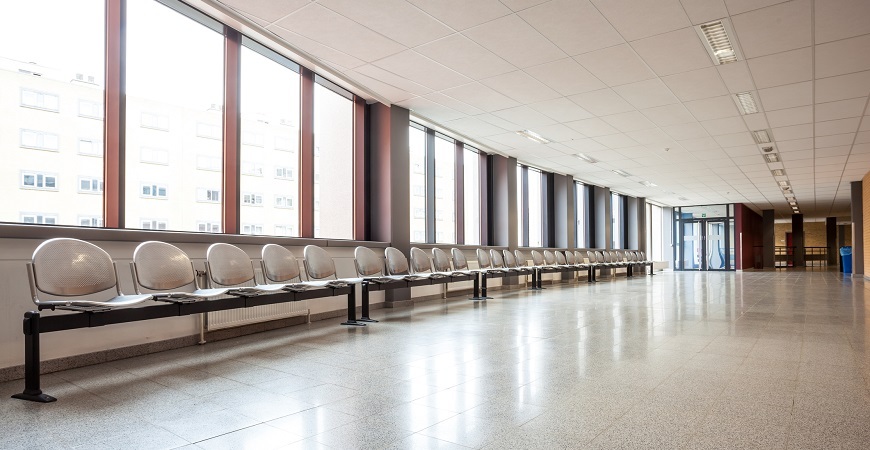Is the Patient In? Using Automated, Mobile Apps to Reduce Patient No-Shows

Patient no-shows in healthcare are a costly problem, both for providers as well as for patient outcomes. A modern and automated approach to designing healthcare apps can help reduce it.
Even with advances in IT, curbing patient no-shows has amounted to healthcare practitioners being busy doing something, but slightly different than the day before. It is estimated that in 2015, no-shows, on average, cost a single provider nearly $150,000. When you factor for inflation, that same provider, in 2018, would be losing closer to $160,000 in revenue. Text messages and phone calls are ubiquitous, and mining structured and unstructured data from these patient-provider interactions is rarely seamless. More often than not, it is a costly Sisyphean effort that does not lead to actionable, proactive practice changes that can reduce patient no-shows.
In the case of no-shows, providers have used outbound/inbound communication such as text and phone calls to create habit formation—a process in which new behavior (show-up to one’s appointment) becomes repetitive and automatic. Unfortunately, over time negative reinforcement (e.g., missed appointment fees) is not a deterrent to curb patient no-shows. Even with higher deductibles, patients are willing to deal with the consequences of missing their appointments, i.e., delay in disease detection, which leads to an increase in overall healthcare cost.
Adaptive Performance Expectations
It is estimated that nearly 986 million patient appointments will be booked with online tools by 2019, which will result in nearly $3.2 billion in cost savings to health systems. However, automating scheduling and increasing scheduling productivity does not reduce patient no-shows. To improve patient outcomes, we need to move beyond one dimensional scheduling solutions., e.g., the ability to book or cancel an appointment using a mobile app.
A majority of patients do not have flexibility in their work schedules; coupled with provider practice hours that are not inclusive of how the modern patient lives, you have the makings of a perfect storm for patient no-shows. In an MGMA Research & Analysis Report, 23.8% of patients did not keep their doctor’s appointment due to work and other conflicts. In the United States, it is estimated that the annual total cost of unused time slots, due to patient no-shows, is nearly $150 billion. That said, most providers don’t have actionable trend data to determine what timeframes might yield lower no-shows and reduce average lost practice revenue.
And a Little of that Human Touch
A one-size-fits-all approach to reducing no-shows is not doable for all provider practices. While some would argue that patient no-shows are simply about the right behavior modification tools, there is a prodigious amount of research on non-health drivers that cause no-shows such as: day and time of an appointment, transportation (it is estimated that 3.6 million individuals do not receive medical care due to a lack of transportation), time from booking to actually seeing a provider, and the inability to re-book immediately. Having more actionable patient information will lead to better patient engagement strategies to stem the tide of practice no-shows.
A study in the ACP Internist discovered that schedulers with a higher proportion of no-shows were following practice and scheduling protocols. These findings should be considered when utilizing AI to reduce no-shows with automation. Enabling a no-show solution with predictive technology should not become a series of rote solutions that do not proactively reinforce patient participation or enhance the patient experience. When building new predictive scheduling solutions, we need to be inclusive of the digital experience of the end-user. That is to say that IT is a catalyst for improving no-shows, not a panacea.
Talking About a Revolution
The next generation of no-show solutions will be able to provide near real-time practice data to determine patient behavior characteristics so that providers can improve the patient experience and have better outcomes. Having the right data, on the right patient, at the right time will be essential to reducing the overall percentage of a practice’s cost associated with patient no-shows.
For many providers, the checklist of features and functionalities to include or exclude on their digital transformation roadmap is daunting. Additionally, when you factor in that some solutions are frequently cost-prohibitive and not scalable, it is little wonder that providers prefer to keep a fragmented scheduling system. To achieve high practice productivity and improve patient outcomes, providers will need to be a part of the innovation transformation conversation. Although the path to digital transformation for no-show mobile apps might seem daunting, the current status quo is not sustainable.
When looking to build an innovative no-show mobile app, you might want to consider:
- Transportation logistics, e.g., built-in integration to public transport and popular ride-sharing services that will indicate transportation delays, cost, and time for a ride from the patient’s current location to the provider practice;
- Automating and triaging appointments based on patient cancellations and providers’ waiting list; and
- Using predictive analytics to determine the likelihood of a patient missing or canceling an appointment.
With pre-built integration accelerators, healthcare providers can remediate transportation concerns, automate and triage new appointments, maximize scheduling options for patients, and improve the patient experience with a data driven approach to reducing patient no-shows.
Note that this post was co-authored by Alison Nicole Haughton and Jikku Venkat, and also appeared on Becker's Hospital Review.

Alison Nicole Haughton
With nearly 18 years of Healthcare IT product marketing experience, Alison Nicole Haughton has worked across the continuum of healthcare for companies such as IMS Health, Harvard Medical School, Parexel, and a variety of early stage healthcare companies implementing m-Health clinical. Ms. Haughton received her bachelor’s degree from American University and master’s from Tufts University School of Medicine/Emerson College.
